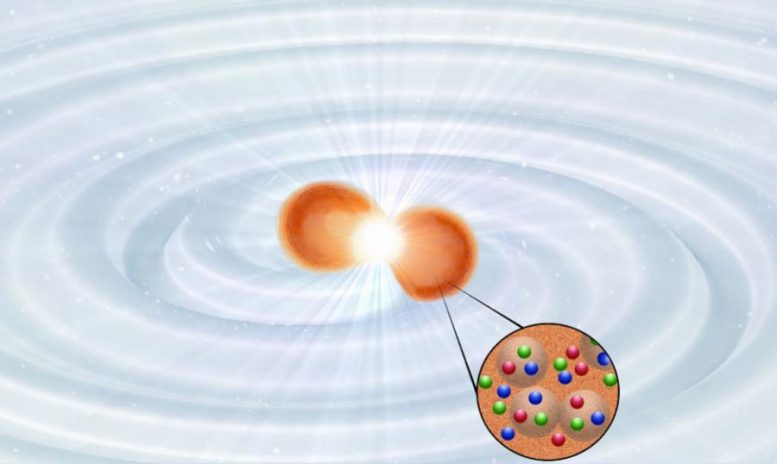
Collision of two neutron stars showing the electromagnetic and gravitational-wave emissions during the merger process. The combined interpretation of multiple messengers allows astrophysicists to understand the internal composition of neutron stars and to reveal the properties of matter under the most extreme conditions in the universe. Credit: Tim Dietrich
Combining signals from multiple observations of neutron stars has allowed researchers to better understand the properties of ultra-dense matter and constrain the Hubble constant, which describes how fast the Universe is expanding, according to a new study.
Neutron stars are the collapsed cores of massive stars and have greater densities than an atomic nucleus. However, little is known about the properties of matter under such conditions, which cannot be reached in Earth-bound laboratories. To study matter at these extremes, researchers turn to cosmic collisions — binary neutron star mergers.
When neutron stars collide, they release both electromagnetic radiation and gravitational waves. Observations of these distinct signals from the same event, known as multi-messenger astronomy, can be used to study the state of immensely dense neutron star material and the expansion rate of the Universe.
Tim Dietrich and colleagues developed an analytical framework that combined messengers from two neutron star mergers — the gravitational wave event GW170817 and its accompanying electromagnetic signals, and the gravitational wave-only event GW1904215.
Combining these events with independent electromagnetic measurements of isolated neutron stars and calculations from nuclear physics theory, Dietrich et al. constrained the neutron star equation of state, which relates the mass and radius of each neutron star. The approach also provides a measurement of the Hubble constant; they find a value which is most consistent with previous measurements of the cosmic microwave background.
For more on this research, read New Calculation of the Hubble Constant Via Multi-Messenger Astronomy.
Reference: “Multimessenger constraints on the neutron-star equation of state and the Hubble constant” by Tim Dietrich, Michael W. Coughlin, Peter T. H. Pang, Mattia Bulla, Jack Heinzel, Lina Issa, Ingo Tews and Sarah Antier, 18 December 2020, Science.
DOI: 10.1126/science.abb4317

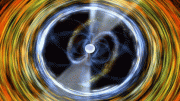

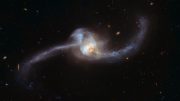
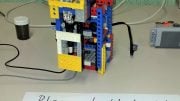
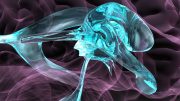



Its because S grows to ES grows to EES and keeps growing…
I’ve been predicting the Hubble constant as 71 for years. Please see https://vixra.org/pdf/1801.0189v1.pdf Sphere Theory Calculates a Hubble constant in line with average of Wikipedia Summary
Vixra is a pseudoscience site.
Haha! So is commenting here. Although, one never knows where truth comes from. Most research in physics is pseudo science. Have you not seen how many different theories there are. All are just shadows through a foggy window. Vixra is just for people who don’t have the connections of a university.
Unrelated low-z methods such as massive galaxy statistics and multimessenger observations gives a result in the middle range or H_0 ~ 70 km s^-1 Mpc^-1.
Supernova papers show that these ladder dependent low-z methods have problems with observations of two populations of supernova, leading to fragile statistical support.
And finally work on magnetic fields that integrate observations of such with the CMB and BAO methods show that the latter may need to be reconciled with a reduced sound horizon at recombination. “The required field strength to solve the Hubble tension is just what is needed to explain the existence of galactic, cluster, and extragalactic magnetic fields without relying on dynamo amplification. ,,, essentially as good a fit to CMB as the Planck LambdaCDM.” [“Relieving the Hubble tension with primordial magnetic fields” @ arxiv] The result is that they agree with the non-ladder low-z methods on H_0.
If one or both of these promising leads come to fruition the current simple 6 parameter LCDM theory survives unscathed, without any need for extraordinary new physics and extraordinary new observations supporting it. That is a much better position than we started the year with.